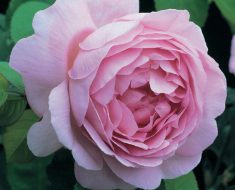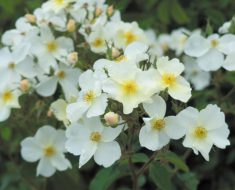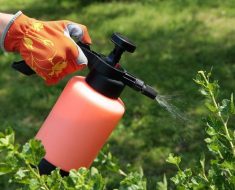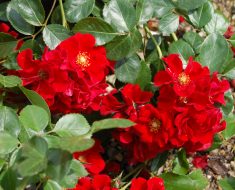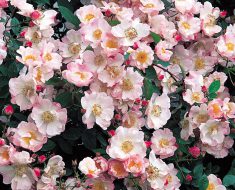Rose THE SQUIRE – English shrub rose. D. Austin named in honor of one of the characters in “Canterbury Tales” Chaucer. The velvety flowers of the plant retain a red tint, and do not turn into purple or violet tones, like most remnants. Their fragrance is strong and reminds of the smells of Ancient roses.
CHARACTERISTICS THE SQUIRE
- Group – English roses
- Basic form – shrub
- Height – up to 1.5 m
- Diameter – up to 1.2 m
- Bush form – oval-round
- Color of flower – red
- Number of petals – from 40
- Flower shape – cup-shaped rosette
- Flower size – 10 – 12 cm
- Flowering form – clusters
- Flowering type – repeating
- Aroma – strong
- Foliage – dark green, large, moderate density, dense, with shine
- Shoots – flexible, upright, durable, with spikes
- Features – the flower retains color; blooms on young shoots; prefers sunny areas; collection rose
- Resistance to powdery mildew – medium
- Resistance to black spotting – above average
- Cold resistance – 5-10 zones USDA
- Breeder – D. Austin
- Catalog name – Ausquire
- Year of introduction to the culture – 1976
- Soil – all types of
- pH – there may be slight variations from neutral ( 5.6 – 7.8)
- Drainage – required
- Plot – sunny / partial shade
- Container – yes
- Standard – yes
- Planting types – mixed plantings, borders, hedges, container garden, rose gardens
- Pests – typical for roses
- Diseases – powdery mildew, black spotting, rust of roses
THE SQUIRE
Care of the rose THE SQUIRE as follows:
- Planting for roses is the most important stage of care for them. Rose THE SQUIRE prefers sunny areas with well-arranged drainage. It grows on almost all types of soils. The earth must be loose in order to allow enough water and air to pass through to the root system.
- Watering. Roses are watered as necessary – from 10 liters of water per 1 adult shrub on average 2 to 3 times a week. In dry times, watering is more frequent. If the English rose THE SQUIRE grows in a container, then watering is usually more frequent. In both cases, it all depends on weather conditions.
- Fertilizing with fertilizers is carried out at least 2 to 3 times during the growing season. It can be both mineral fertilizers and organic. Vitamins are also given to roses, which are administered by spraying. For roses growing in pots, fertilizing is more frequent, but smaller doses are used.
- Pruning roses depends on the group to which it belongs. Do pruning twice. In summer, faded parts are constantly cut to stimulate the appearance of new flowers. In autumn, winter or early spring, pruning is done to form the plant and prevent it from diseases or pests hiding under the bark of the plant. The SQUIRE potted rose is also pruned.
- Loosening and weeding the soil around the rose bush is necessary for the circulation of air, moisture and nutrients for the root system. To minimize your labor, use mulching. This agrotechnical technique will help reduce weeds and leave the soil longer moist. This applies to container roses.
- Shelter for the winter is especially necessary if the minus temperatures are very low or in winter, frequent long thaws are characterized by a sharp decrease in minuses. Be sure to cover the English rose THE SQUIRE, growing in pots.
Enjoy your cultivation!


